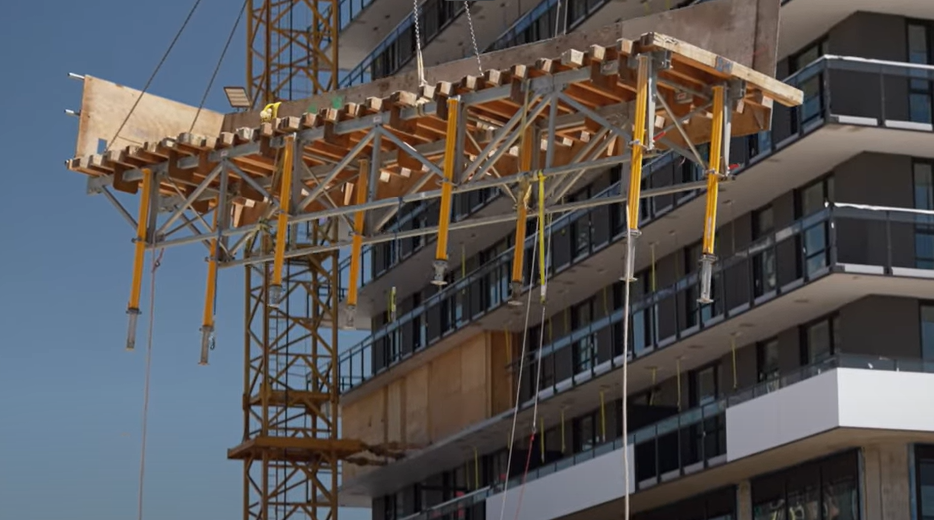What employers and employees need to know about roles and responsibilities


Over the years, workplaces have become increasingly safer thanks to legal mandates and regulations to protect staff. However, dangers still linger. It is the responsibility of both employers and employees to ensure common accidents, such as slips and falls, don’t happen. Considering the various risks of each workplace and industry, this can be difficult to achieve.
According to the National Floor Safety Institute, these accidents are the leading cause of worker’s compensation claims, and 85% of those claims are due to slick or slippery floors. But hazards can crop up anywhere, such as spills of substances, unsecured mats, debris in walkways, or due to unsuitable footwear. Chances are, wherever you work, you've encountered a situation that, if left unaddressed, could lead to a slip and fall incident.
Protecting yourself and others from these preventable incidents requires the implementation of best practices and, in some cases, comprehensive solutions.
Employer responsibilities
Employers are expected to have an intimate understanding of their work environments and should implement comprehensive preventive measures to safeguard their employees. This responsibility includes:
- Conducting regular inspections of the work environment to identify and rectify unsafe conditions.
- Establishing and enforcing control measures promptly when risks are identified.
- Ensuring continuous maintenance and the proper functioning of equipment and protective gear.
It is also essential to educate and inform employees of proper procedures to prevent slips and falls, such as the proper storage of equipment, use of devices, and adequate handling. Demonstrating a commitment to safety by having effective plans and designated responsibilities helps address potential hazards proactively and mitigate risks before they can become a danger.
Employee responsibilities
As an employee, you are an active team member during the workday. This means you are more exposed to workplace routines and must act to protect yourself and others. You’re also more likely to notice when something is amiss that could result in a slip and fall, and it’s essential to know when and how to report it to your supervisor. This includes defective devices or the absence of equipment.
Participating actively in proper safety measures can help influence those around you to do the same. Wearing personal protective equipment and taking precautions during tasks to follow procedures ensures your safety and those around you.
When accidents occur
Despite best practices and efforts, slip and fall accidents can still occur. Knowing how to respond when they happen is crucial to ensure appropriate handling of the situation.
Premise liability
Laws surrounding premises liability vary depending on the location. Within workplaces, these legal principles govern the responsibility of employers and property owners for injuries or accidents that occur on their work premises. This legal concept is essential for ensuring the safety and protection of employees, visitors, and anyone on workplace property.
- Duty of Care: Employers and property owners have a legal duty to maintain a safe and secure work environment. This includes keeping the premises free from hazards and complying with safety regulations and standards relevant to the specific industry.
- Standards of Care: Employers owe their employees the highest duty of care. They must provide a safe working environment, which includes addressing known hazards, conducting regular safety inspections, and training employees in safety protocols.
Failure to comply with these regulations can lead to legal repercussions. If an employee sustains injuries from a slip and fall due to negligence, they have the right to initiate a legal claim seeking compensation for the harm suffered.
Steps the injured party should take
No matter how the incident occurred, it’s common to feel shock and uncertainty following a slip and fall. Your top priority should be your health and well-being as you consider your healing journey.
- Seek medical attention. Even if you don’t receive immediate medical care, consulting a doctor or healthcare professional after a slip and fall is worthwhile. Medical professionals can conduct thorough examinations, run necessary tests, and document your injuries, setting you on the appropriate path to recovery.
- Ensure your employer is aware. Notify your direct supervisor and provide them with as much information as possible regarding your slip and fall. They will have to complete incident reports and might implement additional safety measures to prevent similar accidents in the future.
- Maintain a Personal Record: Keep a detailed account of relevant dates and events. This should include the date of the accident, medical appointments, physical therapy sessions, and any other pertinent information. Note any emotional and physical challenges you experience, as this comprehensive record will provide a holistic view of your journey through recovery.
- Exercise Caution on Social Media: While social media platforms are excellent for sharing life moments and staying connected with friends and family, it's wise to refrain from posting about your accident or injuries. Any information shared publicly could potentially be used against you in legal proceedings.
- File a claim. Whether you are looking for worker’s compensation or considering legal counsel for a lawsuit, filing a claim is the first step to ensuring you are fairly compensated for your injuries.
Steps the employer should take
Navigating the next steps of a slip and fall in your workplace as an employer means following a set of requirements. As the accident happened on your property, premises liability highlights the need for your due diligence before and after it happened.
- Support the employee. Maintaining open lines of communication is crucial following a slip and fall incident. Assure your employee that they are supported and inform them of the procedures and resources available. Collaborate with them to arrange a modified work schedule or necessary leave to facilitate their recovery.
- Keep records of the accident. Fill out the appropriate forms and documentation following the slip and fall. Include relevant details, eyewitness accounts, and ongoing communication with the injured party.
- File an Employer Report of Injury or Illness. In each province and territory, there is a Worker’s Compensation Board where you must file a report of what happened. Even if the employee does not need medical treatment, you are still required to fill out this paperwork.
- Refrain from Interfering in the Claims Process: If the injured party opts to pursue legal action, it's advisable to step back and let legal professionals manage the case. Seek counsel and allow attorneys to proceed with handling the case.
Conclusion
Ensuring a workplace is safe from potential slip and fall hazards can be challenging. That is why it is the responsibility of employers and employees alike to continuously stay on top of these risks. Being proactive can help prevent issues before they become hazardous. If an accident does happen, the injured party and the employer must do their own due diligence after the incident. This may also lead to a legal claim, which is best handled by experienced attorneys on both sides of the case.





